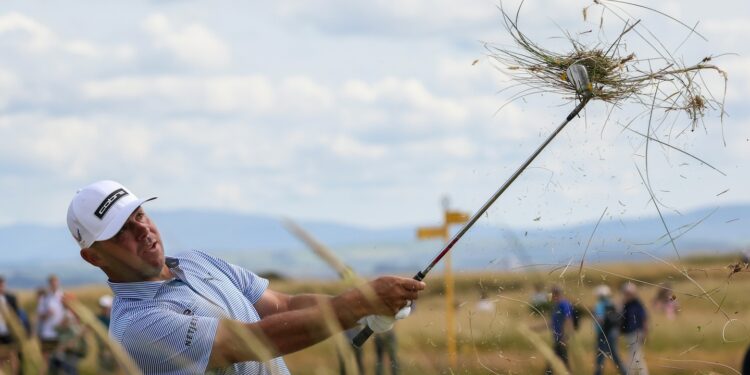– How does the plant life in the rough at Royal Troon help control erosion?
The British Open Rough at Royal Troon is a breathtaking spectacle of nature that offers stunning ecology and a unique environment unlike any other golf course in the world. It is a place filled with beauty, diversity, and an ecosystem that has thrived for centuries in this coastal setting. In this article, we will explore the fascinating ecology of the British Open Rough at Royal Troon and delve into the wonders that make this place so special.
Royal Troon is located on the west coast of Scotland, and its natural setting provides a perfect habitat for a wide variety of plant and animal species. The rough areas of the course offer a glimpse into the stunning ecology of the region, with a diverse range of flora and fauna that have adapted to the coastal environment.
Flora and Fauna
The rough at Royal Troon is home to a rich and diverse range of plant species that are well adapted to the sandy soils and coastal climate. The course features a stunning array of grasses, wildflowers, and shrubs, each playing a vital role in the ecosystem. Some of the notable plant species that can be found in the rough include Marram grass, which helps to stabilize the sandy dunes, and Sea Pink, a vibrant wildflower that thrives in the coastal environment.
In addition to the plant life, the rough at Royal Troon is also a haven for wildlife. The course provides a vital habitat for a range of bird species, including skylarks, lapwings, and oystercatchers. These birds are just some of the many species that call Royal Troon home, and the course is an important nesting ground and feeding area for these creatures. Additionally, the coastal setting of Royal Troon attracts a variety of marine life, including seals and other marine mammals that can often be spotted from the course.
Erosion Control
The stunning ecology of the British Open Rough at Royal Troon also plays a critical role in controlling erosion and maintaining the integrity of the coastal landscape. The plant life in the rough, such as Marram grass, helps to stabilize the dunes and prevent them from being eroded by wind and waves. This, in turn, helps to protect the coastline and maintain the natural beauty of the area. The rough also acts as a natural barrier, helping to mitigate the effects of storm surges and protect the surrounding land from erosion.
Conservation Efforts
The management of the rough at Royal Troon is carefully balanced to ensure the protection of the delicate ecology while also providing a challenging and fair playing environment for golfers. The course’s dedicated greenkeeping team works tirelessly to maintain the rough areas, using sustainable and eco-friendly practices to preserve the natural beauty of the landscape.
Through dedicated conservation efforts and responsible land management, Royal Troon continues to safeguard the stunning ecology of the British Open Rough while providing an exceptional golfing experience for players and spectators alike.
Practical Tips for Visitors
For those visiting Royal Troon, it is essential to remember that the rough areas are part of a delicate and protected ecosystem. Visitors should take care to respect the natural environment and avoid disturbing the plant and animal life. Additionally, staying on designated pathways can help to minimize impact on the delicate flora and fauna, ensuring that everyone can continue to enjoy the stunning ecology of the British Open Rough for years to come.
the ecology of the British Open Rough at Royal Troon is a remarkable and unique natural wonder that enriches the experience of both golfers and nature enthusiasts. The stunning array of plant and animal life, combined with the essential role it plays in erosion control and conservation efforts, makes Royal Troon a truly special place. As visitors and golfers alike, it is important to appreciate and respect the natural environment, ensuring that generations to come can continue to marvel at the stunning ecology of Royal Troon.
In this 152nd British Open at Royal Troon, the rough is expected to take center stage due to ample rain in 2024. The traditional perception of golf courses being merely expanses designed for the sport is evolving. Bob Taylor, an ecologist, emphasizes that golf courses should be seen as nature preserves. Over the past decade, Royal & Ancient Golf Club, which oversees the British Open, has made concerted efforts to incorporate ecological principles into their golf course management. There has been a shift towards effectively managing the rough, allowing the natural environment to thrive while also minimizing the instances of golf balls getting lost in tall grass.
The biodiversity and ecological significance of golf courses are highlighted by the presence of various wildflowers, insects, mammals, and birds. Sophie Olejnik, an ecologist, points out that the fringing rough, a managed area near the fairway, has become vital not only for wildlife but also for the visibility and retrieval of golf balls. The management of the rough has now been prioritized to ensure a balance between ecological preservation and the playability of the golf course.
Royal Troon is acknowledged as a Site of Special Scientific Interest, showcasing a rich variety of flora and fauna. Even the seemingly harsh elements like gorse hold ecological significance, providing shelter for a diverse range of wildlife. The grasses and plants surrounding the golfers play an important role in the ecological balance, and their significance is explained in ecological reports.
The coexistence of golf and ecology shows a harmonious relationship where nature is appreciated and celebrated. The golf course at Royal Troon is not just a space for the sport but also a vibrant ecosystem. The emphasis is on reinforcing the dynamic nature of the sand dunes and ensuring the sustainability of the diverse plant life. The management of the golf course aims to minimize the impact of non-native plant species and to enhance the overall ecological health of the area.
Incorporating ecological principles into golf course management is aligned with conservation efforts focused on preserving the natural environment. The understanding that a golf course is more than just an arena for the sport is gradually gaining recognition. The meticulous management of the rough, the wildflowers, and the diverse range of flora and fauna is a testament to the evolving perspective of golf courses as invaluable nature preserves.






